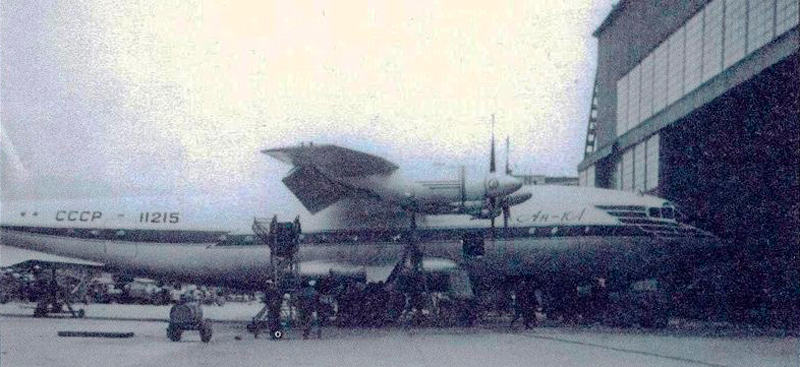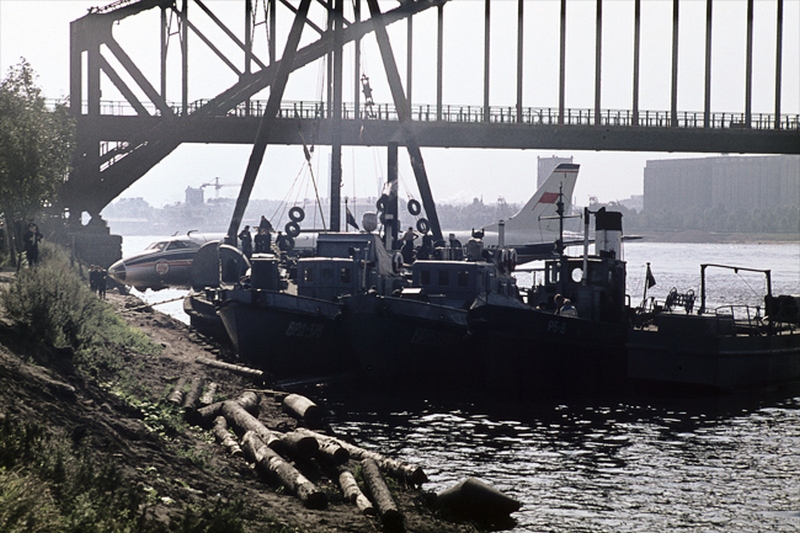Crash of an Antonov AN-10A in Rus'ka Lozova: 122 killed
Date & Time:
May 18, 1972 at 1153 LT
Registration:
CCCP-11215
Survivors:
No
Schedule:
Moscow - Kharkiv
MSN:
0 4 025 02
YOM:
1960
Flight number:
SU1491
Crew on board:
7
Crew fatalities:
Pax on board:
115
Pax fatalities:
Other fatalities:
Total fatalities:
122
Aircraft flight hours:
15483
Aircraft flight cycles:
11105
Circumstances:
Following an uneventful flight from Vnukovo Airport at an altitude of 7,200 meters, the crew was cleared to approach Kharkiv-Osnova Airport and to descent to 1,500 meters. While approaching at a speed of 400-500 km/h with a rate of descent of 6 meters per second, the airplane lost its both wings, dove into the ground and crashed in a wooded area located in Rus'ka Lozova, about 25 km north of Kharkiv-Osnova Airport. The aircraft was totally destroyed and all 122 occupants were killed.
Probable cause:
It was determined that a structural failure of the center section lower panel caused the failure of both wings due to fatigue cracks. The rate of descent and the presence of atmospheric turbulences were considered as contributing factors. Investigations revealed that this portion of the aircraft could not be inspected by technicians during a maintenance process due to a faulty conception of the aircraft, thus the fatigue fractures could not be detected in time. Following this tragedy, the Antonov AN-10 would not be operated anymore in passenger service.




